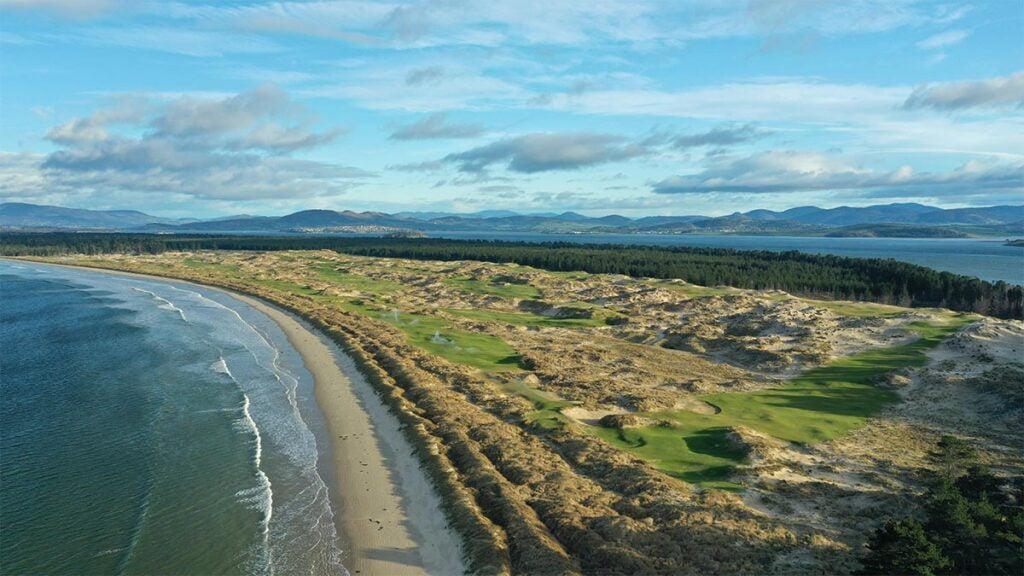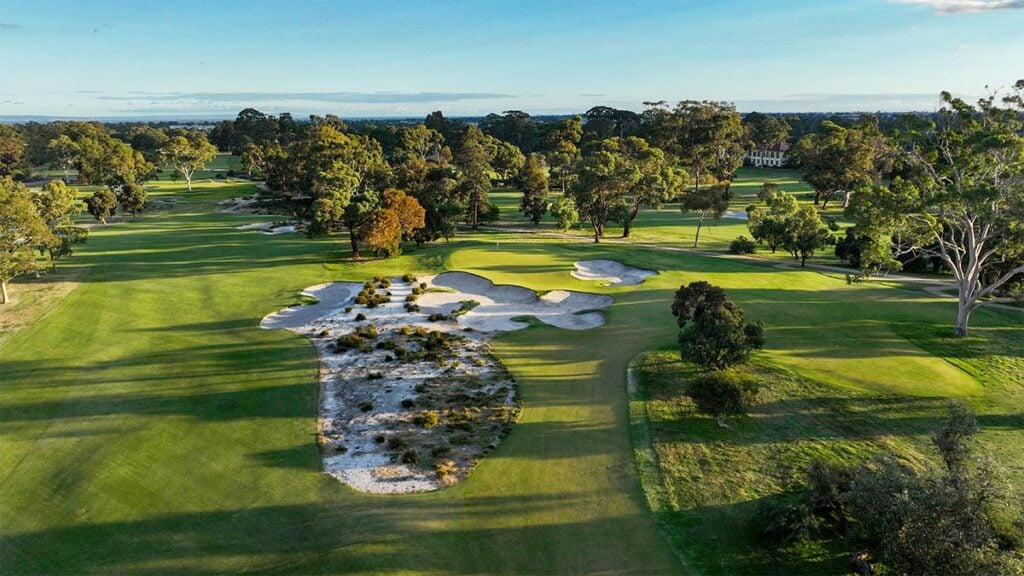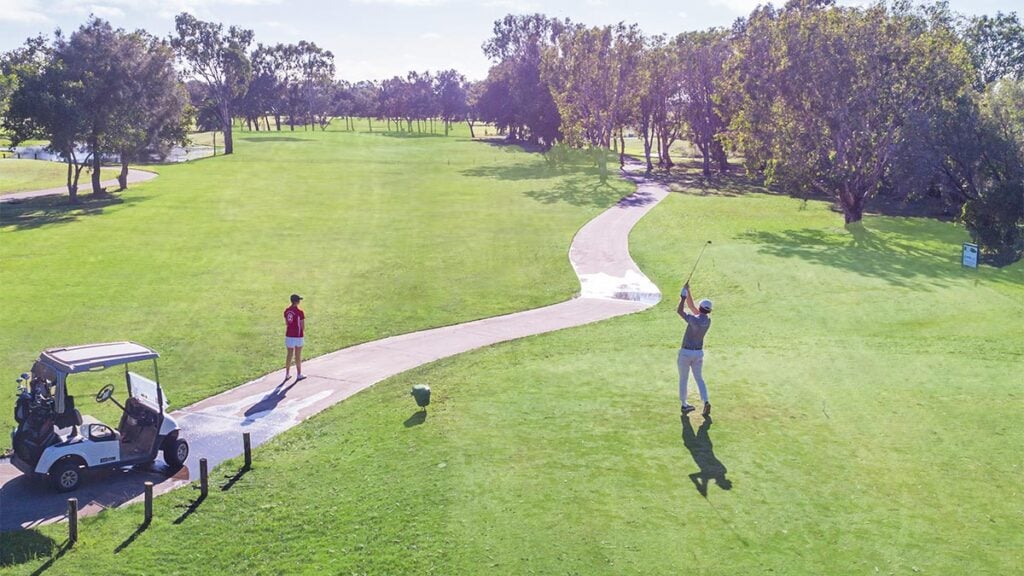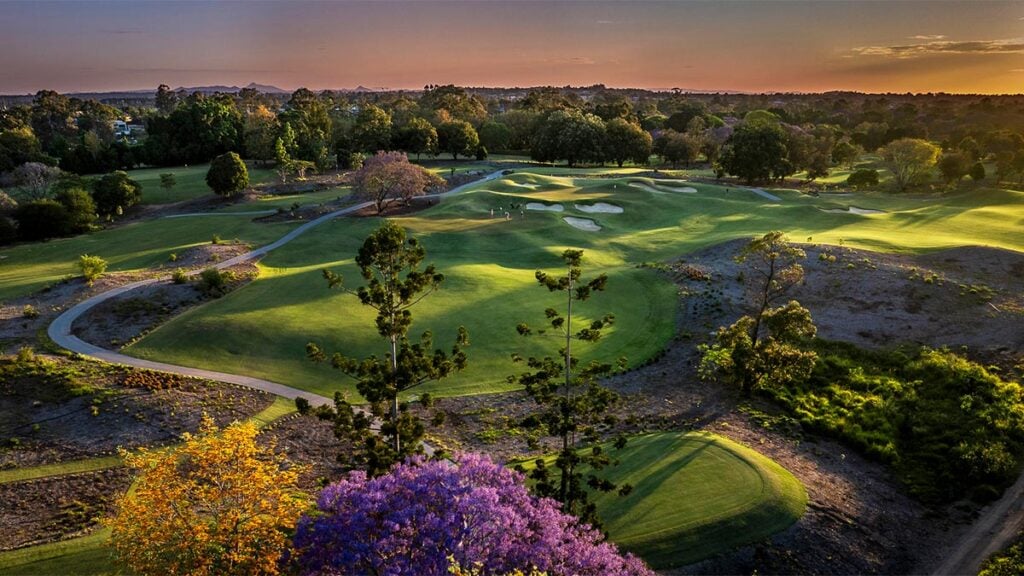At the midpoint of the ranking cycle that will determine our 2026-2027 Top 100 Courses list, which courses are making waves according to our roving panellists?
If you don’t like volatility, the broader landscape of Australia’s golf-course scene might not be the place for you. Sure, new builds are not taking place at the frenetic pace they enjoyed a few decades ago, but the renovation realm is currently operating at full tilt. Blink and you might miss something.
As we passed the midpoint between Top 100 Golf Courses rankings this autumn, it gave us pause to speculate what the next edition of our biennial list might look like. Australian Golf Digest’s national course-evaluation panel submits scores on an ongoing basis, allowing us to take regular looks at a ‘live’ ranking. That’s a good thing, because the year since the release of the 2024-2025 list has seen a wave of course-renovation work taking place across the country, while at least two brand new layouts are also set to shake things up.
Hobart’s much-hyped 7 Mile Beach course began welcoming preview play in mid-May, while The Cliffs Kangaroo Island is expected to do the same next summer. The latter will need to see adequate panellist visitation in its first few months to be eligible for our 2026-2027 list, but where both new courses land – whether in the next ranking or beyond – will be compelling.

Also interesting will be the landing spots of the ‘renovated set’. Chronologically from Sydney’s Pymble Golf Club, where the James Wilcher-penned redesign was unveiled just too late for re-inclusion on our list last time, to Melbourne Sandbelt favourite Huntingdale Golf Club, which is due to welcome back golfers next summer, this entire ranking cycle has been and will continue to be filled with course re-openings.
Last year saw the unwrapping of the new-look course at Commonwealth Golf Club, that renovation taking place under the watch of Tom Doak associate Brian Slawnik. The return came amid glowing reviews, which flowed right through to the club co-hosting the Australian Amateur Championship this past January and since that week.
“At Commonwealth, we had to address decluttering, in terms of overplanting of trees and vegetation,” Slawnik said. “That effort was more about regaining space for golf and healthy turf while retaining the intimacy that particular routing of holes created and utilising the best existing trees and vegetation to protect that sense of place.”
Metropolitan Golf Club is the latest Melbourne Sandbelt course to reveal a facelift after a series of careful alterations, primarily to greens and bunkers. The work done to date by Paul Mogford from Crafter + Mogford Golf Strategies has focused on the back nine, with several greens renovated and bunkers rebuilt and/or restored. Holes like the par-4 12th and 16th holes were altered considerably, the former characterised by a restored front-to-back-canted green and the latter now boasting an unobstructed view of the green from the tee. Next up for the club is the proposed amalgamation with neighbouring Huntingdale, with a member vote set to take place next March.
Sandbelt vibes have travelled across the Nullarbor to Perth’s Mount Lawley Golf Club, where the OCM redesign began drawing golfers in February. The bunkering is unique to Western Australia and is very aligned with the Sandbelt courses. “Feedback from members and guests has been exceptional,” says general manager Troy O’Hern. “We host the WA Open in October this year, so that will be a great platform to showcase the new OCM design.”
In Brisbane, Indooroopilly Golf Club’s City nine, which is incorporated into three of the club’s six 18-hole configurations of its 36 holes, re-opened in March 2024. The Ross Perrett/Karrie Webb-led redesign brought the club back to 36 holes and helped transform one of the city’s premier golf facilities. Now taking place is a review of the club’s course masterplan for the other 27 holes.
Two of the fulcrums of Sydney golf are also back in action after major overhauls. In the space of a few weeks this autumn, the venerable New South Wales and Royal Sydney golf clubs re-opened their courses after redesigns authored by Mackenzie & Ebert and Gil Hanse, respectively.
Tom Mackenzie and Martin Ebert’s quick-turnaround work at NSW (the course closed for only six months) yielded visible and visceral results. The pair reworked some of the course’s problem areas – the early holes in particular – and reduced the height of the prominent ridge that created blind shots on the par-5 eighth and 12th. Reconstructing the greens and converting to 777 bentgrass was the crux of the greens work, while altering bunkers and sandy waste areas was a further focus. The pair even had the courage to tinker with the iconic sixth hole, which now features an immense, 65-metre-long green set at an oblique angle to the tee.
Hanse’s reworking of the renamed Bay course at Royal Sydney – a nod to the club’s location at Rose Bay – is a wide-open playing experience where vistas across the site are no longer clogged by the parkland-style rows of trees that were a hallmark of the previous iteration. The artful contours, dramatic bunkering and new sandy waste areas are the design highlights, while the course features new Pure Distinction bentgrass greens that tie-in beautifully with the Santa Ana couchgrass across the remaining surfaces.
In our national capital, Royal Canberra Golf Club’s grass conversion now spans the entire Westbourne course [see page 20] and complements the layout’s major redesign last decade.
Among the courses where the work is incomplete, Links Kennedy Bay, south of Perth, is flagging a “mid to late 2025” return to 18 holes after a lengthy redesign process, while Huntingdale’s renovation under OCM Golf also remains a work in progress ahead of a summer unveiling. The National’s Long Island course (also an OCM Golf project) isn’t expected to re-open until early next year, pushing its Top 100 re-inclusion to our 2028 ranking.

MORE CHANGE AT THE TOP?
Landing spots for renovated courses aside, the big question will be whether Royal Melbourne’s West course can unseat Cape Wickham Links as No.1. Our ranking ruffled plenty of feathers with the unprecedented usurping a year ago, and plenty of observers will want to know if Cape Wickham is a “one-term leader” or whether the time-honoured West course will return to power.
So far, the numbers are extremely tight. As of the federal election-filled period of early May, there was a mere 0.08 gap separating the two, with the incumbent holding the narrow margin despite a ‘swing’ to the opposition. Continuing the election parlance, there are many votes still to be counted in what is very much a marginal seat.
This is shaping up as a campaign that will be the antithesis of the landslide that was Albanese vs Dutton. While these two ‘candidates’ will do their campaigning entirely in silence and the voters remain limited in number, for golfers this will be an intriguing duel for the next nine months ahead of the total divulging next May.


